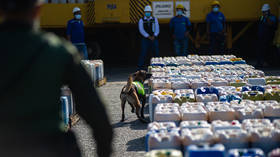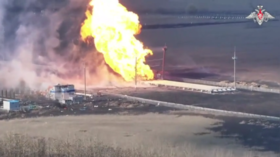Cocaine set to become Colombia’s biggest export – Bloomberg

Cocaine is likely to surpass oil to become Colombia’s biggest export this year, as producers of the narcotic have increased their operations amid the introduction of more lenient policies governing the drug’s production, according to an analysis by Bloomberg Economics.
“We estimate cocaine export revenues jumped to $18.2 billion in 2022 – not far behind oil exports of $19.1 billion last year,” Bloomberg economist Felipe Hernandez said as part of a report published on Thursday. “The government is destroying laboratories where coca leaves are manufactured into cocaine, but that hasn’t prevented production from expanding,” Hernandez added.
The South American country’s exports of cocaine were in excess of 1,700 tons last year, Bloomberg said, nearly double the 970 tons from the year prior. Oil exports, meanwhile, have dropped by 30% in the first half of 2023.
The predicted boom in cocaine production in Colombia comes amid a policy shift imposed by the country’s president, Gustavo Petro, which has called upon anti-drug enforcement authorities to pursue major drug lords who traffic the narcotic overseas rather than coca leaf producers.
Petro has also expressed a desire to hold talks with Colombia’s primary cocaine exporters as part of a bid to reduce drug-related violence.
An unintended consequence of Petro’s policy shift, according to a report published this week by the UN Office on Drugs and Crime, has been a 13% growth in the land used to cultivate coca plants – the leaves of which are processed into cocaine. Harvesting, or otherwise growing, coca plants is illegal in Colombia.
The UN report also stated that about 230,000 hectares (570,000 acres) of Colombian land is being used to harvest coca plants. The surge in available crops has been mirrored by an increase in production, Hernandez added to Bloomberg.
In August, a 9.5-ton shipment of cocaine from Ecuador, which borders Colombia, was intercepted by Spanish authorities. Evidence from the seized shipment, which was disguised as a delivery of frozen bananas, indicated that the drugs were intended to be distributed to 30 European drug rings.













